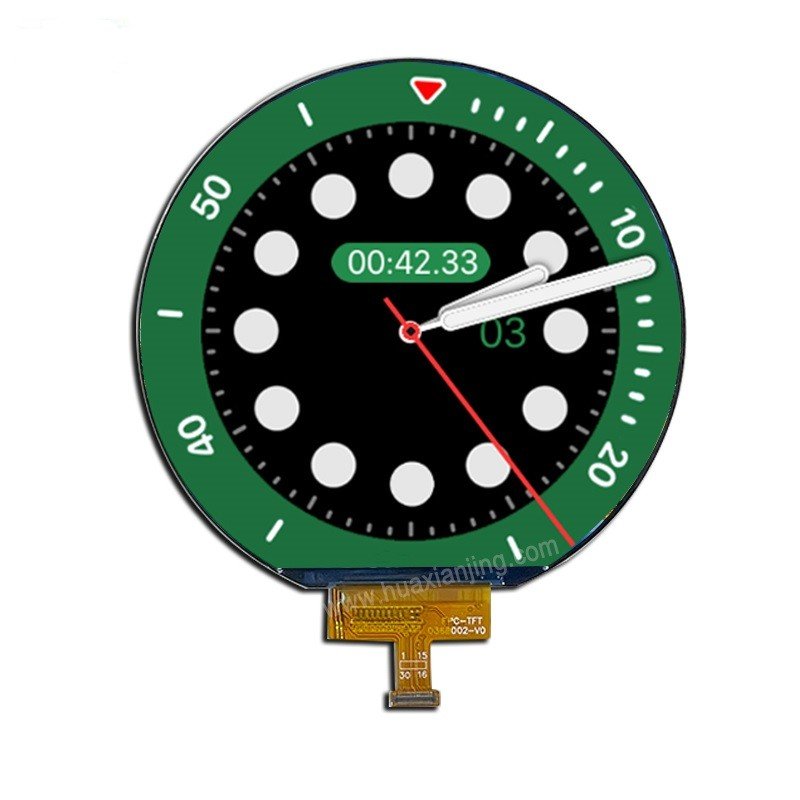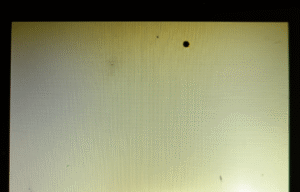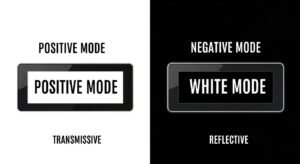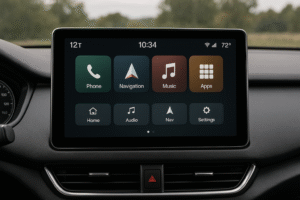
Your new TFT LCD won’t work with a standard driver, and it’s holding up your entire project. This compatibility issue can be frustrating and costly. The solution is understanding that many displays need custom software to function correctly.
A TFT LCD requires custom driver software because its unique hardware—like its specific controller IC, interface protocol, or non-standard resolution—is not supported by generic, off-the-shelf drivers.
I remember a client, who was building a new bicycle computer. He bought a beautiful, crisp TFT display but couldn’t get it to light up. His off-the-shelf driver was simply incompatible.
What Makes TFT LCDs Hardware-Dependent?
A TFT LCD is more than just a screen; it’s a complex system with specific components. This is why a one-size-fits-all software approach often fails.
A TFT display’s dependency comes from its specific combination of a controller IC, a data interface protocol, and a unique screen resolution, all of which dictate how it must be controlled.
Let’s dive deeper into these core components. Each one is a reason why a custom driver might be necessary for your project.
Varying Interface Protocols (RGB, LVDS, MIPI, SPI)
The interface is the communication bridge between your main processor and the LCD. Different interfaces have different jobs. For example, MIPI is great for high-speed, low-power applications like smartphones, while SPI is simpler and used for less demanding displays. Your processor must be able to “speak” the language of the LCD’s interface. If it can’t, the driver software must act as a translator(Exploring LVDS and MIPI Interface).
Here’s a quick comparison of common interfaces I work with at Hua Xian Jing:
| Interface | Best For | Speed | Complexity |
|---|---|---|---|
| MIPI DSI | Mobile, High-Resolution | Very High | High |
| LVDS | Large Screens, Industrial | High | Moderate |
| RGB | Direct Control, Cost-Effective | Moderate | Moderate |
| SPI | Small Displays, Low Data | Low | Low |
Non-Standard Resolutions and Color Depths
Many of my clients need unique display shapes, like round LCDs for smartwatches or square displays for industrial controls. These non-standard resolutions require precise timing signals that generic drivers don’t have. The driver must be programmed to map the image data perfectly onto an unusual pixel grid. Similarly, displays needing very specific color accuracy (e.g., 10-bit color) require custom initialization commands(How Are Embedded LCDs Used in Human-Machine Interfaces (HMIs) for Industrial Control Systems?).
Unique Controller ICs and Command Sets
The driver IC is the brain of the display. Think of it as a specialized processor dedicated to managing the pixels. Each driver IC, like the popular ILI9341, has a unique set of commands. To turn on the display, set the contrast, or refresh the screen, your main system must send the exact right command. If your LCD uses a less common or custom IC, a generic driver won’t know these commands. We have to write software that contains the correct command library for that specific chip(What Is the Difference Between Static and Dynamic Contrast Ratio?).
Why Do Off-the-Shelf Drivers Often Fail?
You might find a driver online that seems perfect, but it fails to work. This happens all the time. It’s usually due to a hidden mismatch between the software and your specific hardware.
Off-the-shelf drivers often fail because they don’t account for discontinued hardware, have no support for legacy products, or have pin configurations that physically conflict with your display’s design.
Let’s look at the most common reasons a generic driver won’t be a simple plug-and-play solution(How Is Hot-Swapping Handled in Modern LCD Controller Boards?).
Discontinued Driver ICs and Legacy Support
A major problem in our industry is that controller ICs get discontinued. A manufacturer might stop producing a chip, but my clients still need to support products in the field for years. When we design a new version of their product with a new display, the new driver IC is often not compatible with the old one. This forces us to modify the product’s firmware to work with the new driver, which takes time and money.
Hardware Mismatches and Pin Configuration Conflicts
Sometimes, you can have the right driver for the controller IC, but it still won’t work. The problem can be the physical connection. The flexible cable on the back of an LCD has a specific pin layout. A custom display we designed for a client in Germany had a unique pin arrangement to fit their product’s compact enclosure. A generic driver assumes a standard layout, creating a conflict where signals go to the wrong pins. The custom driver software must remap these signals to match the hardware(Comprehensive Guide to eDash Mini B Display Connector Pinout).
What Applications Require Custom Optimizations?
For some products, just getting an image on the screen is not enough. The performance must be perfect. This is where custom driver optimization becomes critical for success.
High-stakes applications in the medical, industrial, and automotive sectors need custom drivers to achieve superior image fidelity, reliability in extreme conditions, and performance that generic drivers cannot deliver.
Here are a few examples from my 13 years of experience.
High-Fidelity Displays (Medical, Industrial, Automotive)

In a medical device showing patient vitals, there is no room for error. The colors must be perfectly accurate, and the data must display with zero lag. In an automotive dashboard, the display must be readable in bright sunlight. A generic driver can’t be fine-tuned for this. We write custom drivers to adjust gamma curves, optimize refresh rates, and control the backlight with extreme precision(How Are New Technologies Changing Gamma Correction in Modern LCD Systems?).
Harsh Environments or Niche Use Cases
We’ve designed LCD modules for devices used in oil fields and cold storage warehouses. These displays must function in extreme heat or cold. A custom driver can include temperature compensation routines, which adjust the LCD’s voltage levels to keep the display stable as the temperature changes. For niche use cases, like a display on a high-vibration machine, the driver can add extra error-checking to ensure data integrity(The Effect of Temperature on the Functional Performance of LCD Modules).
How Are Custom LCD Drivers Developed?
Creating a custom driver is a detailed engineering process. It requires a deep understanding of both hardware and software. At Hua Xian Jing, we guide our clients through every step.
Custom drivers are built by carefully studying datasheets, adapting existing open-source code, and running extensive tests to validate that the display performs perfectly with the client’s system.
The process can be broken down into three main phases.
Reverse-Engineering and Datasheet Interpretation
The starting point is always the controller IC’s datasheet. This document contains the command lists and electrical specifications. If the datasheet is incomplete or for an obscure IC, our job becomes part detective work. We use logic analyzers to capture signals and figure out the commands ourselves.
Adapting Open-Source Drivers
We don’t always have to start from zero. The developer community has many open-source drivers for popular controllers. We can often take one of these drivers and adapt it. We modify the code to match the specific pin connections, timing requirements, and initialization sequence of the custom LCD module. This saves significant development time.
Testing and Validation
This is the most critical phase. A driver isn’t finished until it’s proven to be reliable. We test everything:
- Functionality: Does every command work?
- Image Quality: Is there any flickering, ghosting, or color banding?
- Performance: How fast does the screen update?
- Stress Testing: Does it work reliably after running for 24 hours straight?
We use both software simulators and the actual client hardware for testing to guarantee success(What Is the Typical MTBF for Commercial LCD Modules?).
How Do You Integrate the Driver With System Hardware?
The display driver must work in harmony with the rest of your device. Proper integration prevents conflicts and ensures a smooth user experience.
Successful integration means the custom driver must synchronize with other components like the touchscreen controller and manage hardware like the backlight and ambient light sensors.
Here are two key integration points we always focus on.
Touchscreen Controller Synchronization
If your TFT LCD includes a touchscreen, you now have two major components that need to talk to your main processor, often over the same communication lines (like SPI or I2C). The custom display driver must be written to coexist with the touch controller’s driver. We implement software mechanisms to ensure they don’t try to “talk” at the same time, which would cause data corruption(What Are the Differences Between SPI and I2C for LCD Modules?).
Backlight, Brightness, and Sensor Integration
The display driver’s job often goes beyond just showing an image. It is also responsible for controlling the backlight brightness, usually through a PWM (Pulse Width Modulation) signal. We can program the driver to smoothly fade the backlight on and off or integrate it with an ambient light sensor. The driver can automatically adjust screen brightness based on the room’s lighting, saving power and improving usability(How Should You Drive Backlight in an Embedded LCD Display?).
How Do You Plan for Longevity and Flexibility?
Choosing a display is a long-term decision. The choices you make today will affect your product’s lifespan and your ability to adapt to future challenges.
To future-proof your product, select mainboards that support multiple interfaces and work with a supplier who can help you navigate supply chain interruptions by selecting stable components.
As a supplier, my goal is to help clients build successful products for years to come. Here is the advice I always give.
Choosing Adaptable Controller Boards
I advise clients to choose a main processor (MCU) that is flexible. For example, select an MCU that has hardware support for multiple interfaces like SPI, I2C, and parallel RGB. This way, if the display you are using becomes unavailable in five years, you have the flexibility to switch to a different display with a different interface without having to redesign your entire mainboard.
Preparing for Supply Chain Interruptions
The discontinuation of a driver IC is a real threat. At Hua Xian Jing, we help our clients prepare for this. First, we recommend driver ICs that are common and have a long production life. Second, we often identify a compatible “drop-in” replacement IC from the very beginning of the project. Finally, if a chip is being discontinued, we can help clients with a “last-time buy” to purchase enough stock to last for the lifetime of their product.
Conclusion
Custom drivers are essential for unlocking a TFT LCD’s potential. They ensure flawless performance, enable unique features, and provide the long-term stability your product needs to succeed.
FAQ
1. Is it possible to reuse drivers between LCDs with the same controller IC?
Only sometimes. Even with the same IC, panel wiring and timing can differ, requiring adjustments.
2. What happens if I use a wrong driver on my TFT LCD?
The screen may show nothing, flicker, display incorrect colors, or crash your system.
3. What Happens if My TFT LCD’s Controller IC Becomes Obsolete?
We will try our best to find a replaceable driver IC for you in order to avoid replacing the driver, and if it’s fruitless, we will provide technical support to assist you in updating the driver in the long run.
4. What happens if my current TFT LCD supplier discontinues the driver IC?
Driver IC discontinuation is a common industry challenge that can disrupt your product supply chain. The best approach is to work with suppliers who can identify compatible replacement ICs early in your project, perform last-time buys of sufficient stock.
5. Can I use open-source drivers instead of developing custom ones?
While open-source drivers can provide a starting point, they rarely work directly with custom LCD modules without significant modifications. You’ll typically need to adapt the code for your specific controller IC, pin configurations, and timing requirements. This approach can reduce development time by 30-50% but still requires embedded programming expertise to ensure proper functionality.








